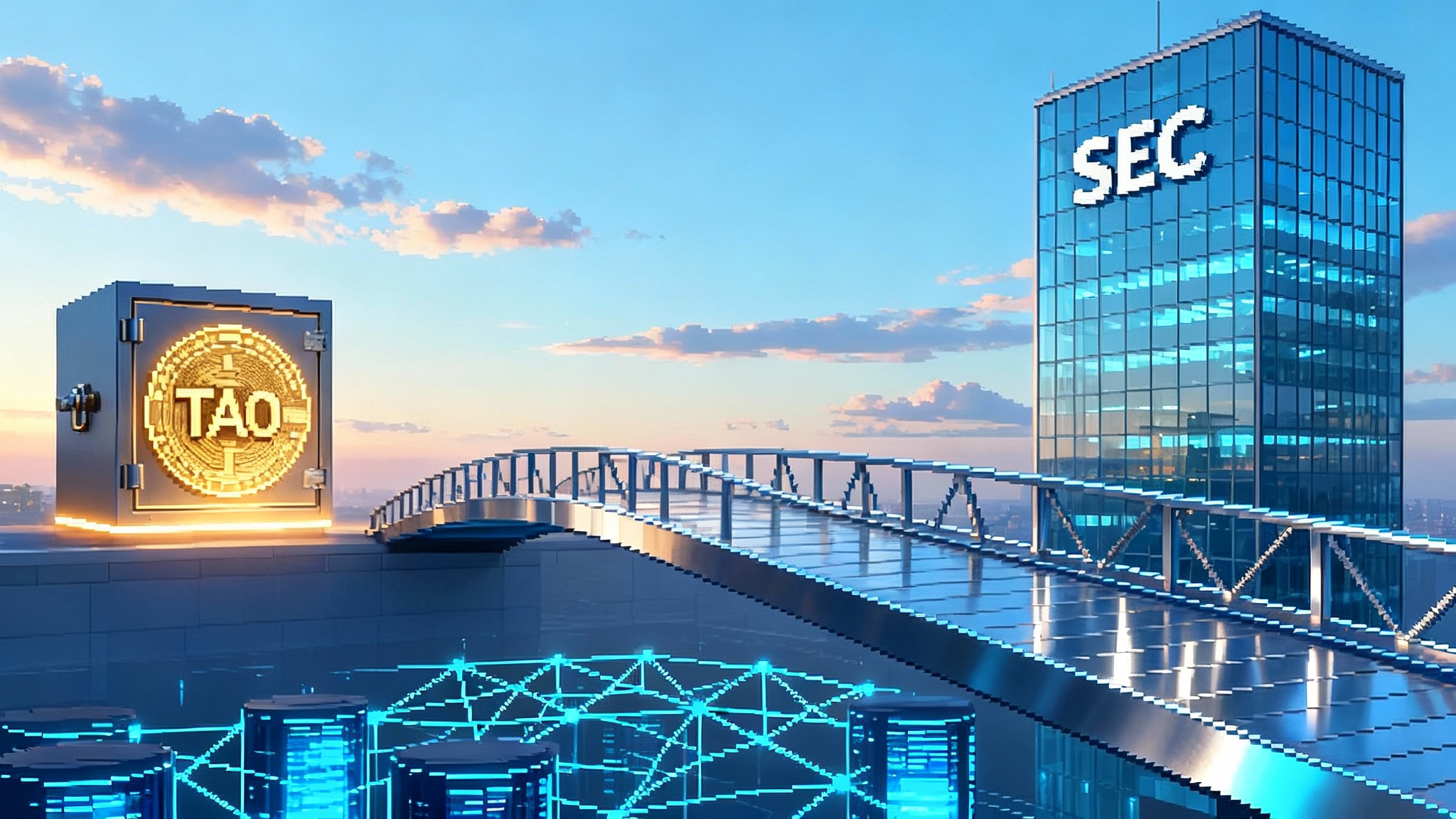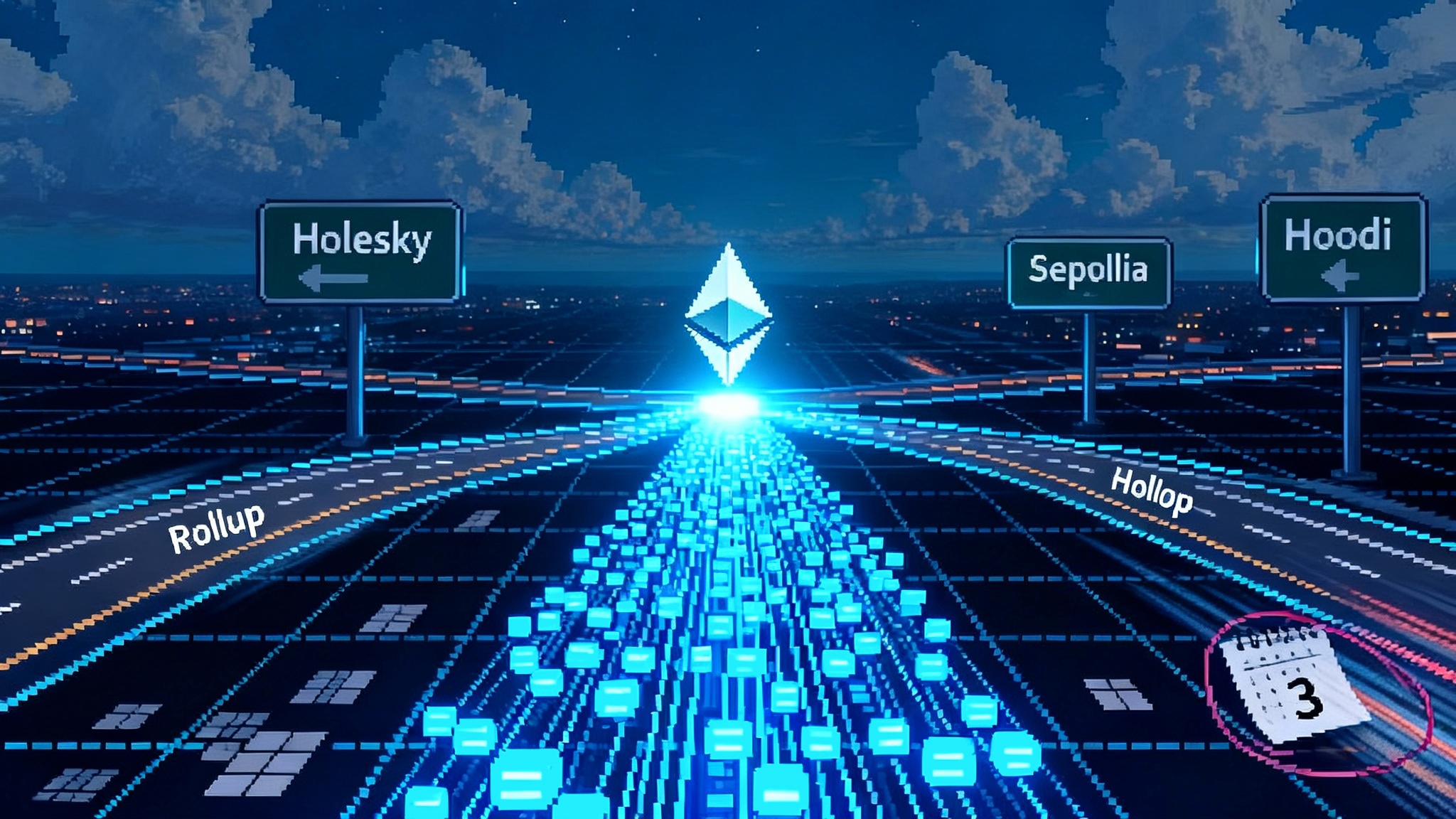Grayscale’s TAO Form 10 Is AI Crypto’s New On-Ramp
Grayscale filed a Form 10 for a Bittensor Trust on October 10, 2025, a faster path to SEC reporting status that can open OTC access for U.S. institutions. Here is why this matters more than an ETF today, the 3-6 month catalyst map, and what it could mean for AI and DePIN.

Breaking: the first institutional bridge to TAO just appeared
Grayscale filed a Form 10 with the Securities and Exchange Commission to register shares of the Grayscale Bittensor Trust under Section 12(g). This is not an exchange traded fund. It is a move to turn the trust into a full SEC-reporting company with audited financials and ongoing disclosures. You can read the primary source in the Form 10 registration.
If you follow crypto markets, you have seen this playbook. Grayscale did it with Bitcoin and Ethereum years ago, creating reporting trusts that could be quoted over the counter and bought in regular brokerage accounts. Doing it for TAO, the token that powers Bittensor’s decentralized machine learning network, is different in one crucial way. It is the first time a mainstream asset manager is asking the SEC to put an AI-first crypto asset on the same disclosure footing as other public securities. That matters for capital formation, compliance, and the next leg of AI infrastructure.
Why Form 10 matters more than an ETF today
Think of an ETF as a public highway with strict on-ramps and a constant flow of traffic. It is fast, liquid, and broadly accessible. A Form 10 trust is a paved access road. It may not carry the same traffic as an ETF, but it connects the asset to the broader financial grid faster than waiting for an ETF approval, and for many institutions it is sufficient to begin allocating. This echoes how market rails unlock access, as discussed in our piece on the rails that could reshape crypto.
Here is what Form 10 does in plain terms:
- It registers a class of securities under the Exchange Act and makes the trust a reporting company. That turns on 10-Ks, 10-Qs, 8-Ks, audited financials, and internal control requirements that institutional investment committees expect.
- It sets a predictable clock. A Form 10 under Section 12(g) becomes effective automatically 60 days after filing, unless the registrant withdraws before that date. See the SEC guidance on automatic effectiveness.
- It can shorten liquidity timelines. Once the trust is a reporting company for at least 90 days and current in its filings, the Rule 144 holding period for privately placed shares can drop from 12 months to 6 months. That makes capital cycles faster for allocators that come in through private placements.
Crucially, a Form 10 trust is not an ETF. It does not list on a national exchange, it does not offer daily creation and redemption with authorized participants, and it can trade at a premium or discount to its net asset value. But it is often the practical path that lets traditional capital engage without waiting on an ETF rulemaking cycle.
What just changed for U.S. allocators
Most U.S. institutions do not buy raw tokens. They buy securities that fit their compliance stack, plug into established custody, and can be held at clearing agents their brokers already use. By becoming an SEC reporter, a TAO trust can check those boxes faster:
- Investment committees get audited financial statements, risk factors, and regular performance reporting they can diligence.
- Brokers and registered investment advisers can process orders in standard accounts once a quotation appears on an over-the-counter venue and the security is DTC-eligible.
- Operations teams can handle reconciliations and surveillance using familiar workflows, not bespoke token custody.
In other words, a Form 10 trust introduces TAO to the professional toolkit in a language allocators already speak.
The mechanics in five steps
To make this less abstract, use a simple assembly line metaphor:
-
File the registration. Grayscale has filed the Form 10, which includes an information statement, financials, and exhibits covering the trust agreement, transfer agent, and custodian arrangements.
-
Wait for effectiveness. Barring withdrawal or unusual developments, the filing becomes effective 60 calendar days after the date on the cover. If the filing date was October 10, 2025, the base-case effective date is December 9, 2025.
-
Start reporting. Once effective, the trust is a reporting company and begins filing 10-Ks, 10-Qs, and 8-Ks on the Commission’s system. That turns on the clock for the Rule 144 holding-period reduction for private placement shares.
-
Pursue OTC quotation. After effectiveness, the sponsor can work with broker-dealers to satisfy Rule 15c2-11 requirements and apply for an over-the-counter quotation and DTC eligibility. Exact timing varies by product and market maker appetite, but this is the usual path that brings quotations to standard brokerage screens.
-
Expand distribution. With a live quote and reporting status, the trust can be added to more platform menus for registered investment advisers and multi-asset funds, subject to each firm’s internal policies.
The next 3-6 months: a catalyst map
Pin the calendar now. Here is the realistic sequence teams should plan around.
- December 9, 2025: Base-case effectiveness. The trust becomes an SEC reporting company, absent withdrawal or unusual staff comments that prompt an amendment. Expect the initial 8-Ks and the setup for quarterly reporting to follow soon after.
- Late December 2025 to Q1 2026: OTC mechanics. Market makers complete due diligence for quoting, the sponsor seeks DTC eligibility, and OTC Markets runs its review. There is no guaranteed date, but historically this window is measured in weeks to a few months.
- March 2026: Rule 144 clock. Ninety days after becoming a reporting company, the Rule 144 holding period for privately placed shares can drop to six months if the trust is current in its reports. This can improve secondary liquidity and help the private placement act as a more flexible primary market for TAO exposure.
- Custody and participation mechanics: The Form 10 includes a custodian agreement. Expect the trust to operate as a passive holder of TAO with segregated, institutionally custodied balances. Do not expect the trust itself to participate in subnets, operate validators, or stake by default. Any such activities would require explicit disclosure, risk analysis, and operational changes. The most likely path is passive holding only, which keeps the product simple for reporting, audit, and valuation.
- Bittensor subnet growth: Over this same period, watch for new or upgraded subnets focused on inference serving, data curation, retrieval, reinforcement learning, and routing. More builders will optimize for enterprise reliability, not just throughput, because institutional capital cares about service-level objectives, uptime histories, and reproducibility. The presence of a reporting trust will nudge subnet teams to publish cleaner metrics and standardized transparency reports.
Why this legitimizes AI and decentralized physical infrastructure tokens
The arrival of a reporting TAO trust increases the signal-to-noise ratio for the entire AI plus crypto complex. It does three things other narratives could not.
- It reframes the category around cash flows and service reliability, not just token price. Reporting trusts must describe the underlying network economics, custody risks, and valuation approach. That language helps allocators build real underwriting models.
- It gives compliance teams a foothold. Policies that prohibit direct token ownership can often allow reporting company securities. That is the bridge into mainstream portfolios for AI compute networks.
- It creates a reference asset for AI baskets. Multi-asset funds that want measured exposure to decentralized compute, data, and inference can include a TAO trust alongside other holdings without building a bespoke on-chain stack. For context on portfolio construction, see how crypto’s index age is changing benchmarks.
If you run a subnet or a decentralized compute market, assume your next investor calls will be more like infrastructure diligence and less like crypto roadshows. Expect questions about model versioning, inference verification, production SLAs, rate-limiting, abuse prevention, and audit trails.
Second-order effects for onchain AI agents and decentralized compute markets
- Better counterparty optics. Onchain agents that buy inference or storage will increasingly route to subnets that publish clean, auditable performance data. The trust will not directly interact with agents, but the demand it pulls in will reward operators who meet enterprise reliability norms.
- Pricing gravity. When institutional capital can access TAO via a security, subnet economics begin to feel more like cloud marketplaces. Expect more tiered pricing, volume discounts, and pre-committed capacity deals. Agents that can smartly arbitrate latency and price across subnets will have an edge.
- Verification and receipts. Enterprise buyers will push for proofs of inference and tamper-evident receipts. Subnets that standardize receipts and make them machine-readable will win routing from agents that must meet audit requirements.
- Interop pressure. Agents live across chains. The more capital comes in through traditional wrappers, the more pressure there will be for smooth bridging and custodial settlement rails. That benefits teams that abstract chain idiosyncrasies away from the buyer. Institutions already value 24 by 7 access and listed options, as seen when CME goes crypto native.
Concrete risks to weigh right now
- Liquidity and tracking error. A trust without daily creations and redemptions can trade at persistent premiums or discounts to its net asset value. That basis risk can be large in volatile markets. Mitigation: position sizing, use of limit orders, and internal risk limits tied to measured discounts or premiums.
- OTC is not guaranteed. An over-the-counter quotation requires broker-dealer diligence and venue review. Market makers may move faster or slower depending on perceived demand, operational readiness, and regulatory comfort. Mitigation: treat OTC timing as a window, not a date, and prepare client communications accordingly.
- Regulatory optics. AI plus crypto is new territory. Even with a reporting trust, there will be scrutiny over disclosures, network governance, and any changes to how TAO is used in practice. Mitigation: read the risk factors, track staff comment letters when they post, and assume higher disclosure standards for anything touching data provenance, model integrity, and custody controls.
- Network governance and churn. Subnets can be upgraded, removed, or reweighted. Rapid iteration is a feature of Bittensor, but governance decisions can shift incentives suddenly. Mitigation: include governance monitoring in your research process and maintain a view of which subnets are core to utility, not just short-term rewards.
- Concentration risk. If a handful of validators or operators dominate throughput, service degradation or misaligned incentives can ripple across the network. Mitigation: diversify exposure across service providers where possible and watch concentration metrics.
- Custody complexity under the hood. TAO custody involves address management, key ceremony hygiene, and clear segregation. While the trust uses a qualified custodian, investors should still ask how addresses are controlled, how recoveries are tested, and how on-chain events are reconciled to general ledgers.
What to do now: a practical checklist
For institutional allocators
- Update investment policy statements to explicitly permit Exchange Act reporting digital asset trusts and to address premium or discount risk.
- Ask distribution desks when an OTC quotation and DTC eligibility are likely, and whether your platforms will enable trading on day one.
- Decide how you will measure tracking error. For example, set a maximum acceptable discount or premium to net asset value for new purchases, and have a plan for averaging down or up.
- Prepare research memos that explain Bittensor’s economic primitives and the trust’s custody and valuation processes. Borrow the structure from cloud and data infrastructure memos, not from speculative token notes.
For subnet operators and compute marketplaces
- Publish service-level histories and versioned model documentation. Make it easy for agents and allocators to verify that your output is stable and reproducible.
- Offer usage receipts and basic proofs of inference. Even probabilistic attestations are better than black boxes for enterprise buyers.
- Design pricing and capacity commitments that resemble cloud contracts. That is what portfolios and procurement teams understand.
For builders of onchain AI agents
- Implement multi-subnet routing with budget and latency constraints. Agents that can buy the same class of inference from multiple providers will route around outages and price spikes.
- Log everything. Persist request hashes, model identifiers, and response fingerprints so downstream auditors can reproduce decisions.
- Prepare for fiat-in, token-out paths. If users buy capacity in dollars and your agent pays in TAO, abstract the swap and settlement, and expose clean receipts.
The bottom line
A Form 10 is paperwork, but it is not just paperwork. For TAO, it is the practical bridge that lets U.S. institutions add decentralized AI compute to real portfolios without changing their operating system. The playbook is clear. File the registration. Become a reporting company. Light up OTC access. Shorten the liquidity cycle. Pull new capital into a network that rewards useful machine intelligence rather than pure speculation.
If you are acceleration-minded, this is what progress looks like in capital markets: not the grand reveal of a new structure, but the patient wiring of an old one to a new kind of resource. The next few months will test how ready AI plus crypto is to operate on institutional time. Prepare your memos, your metrics, and your order management systems. The on-ramp is open, and the traffic is coming.








